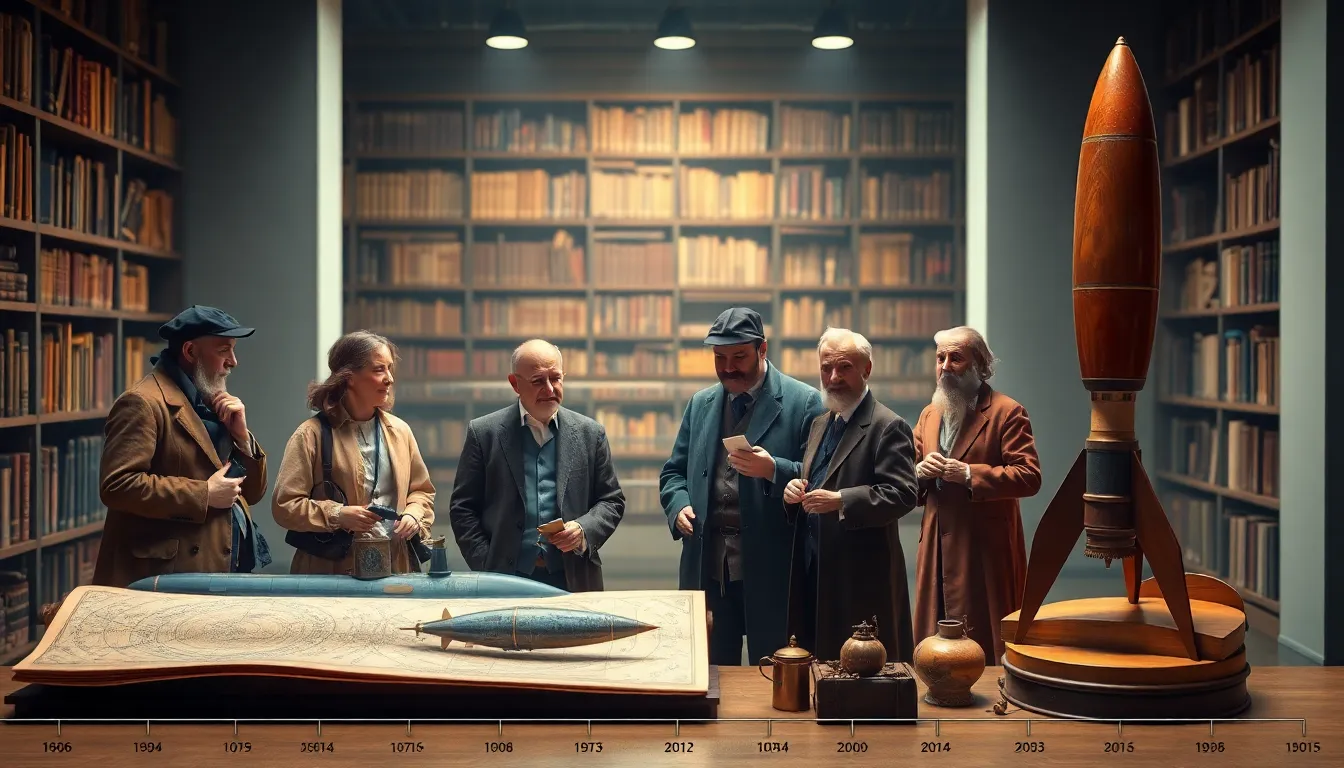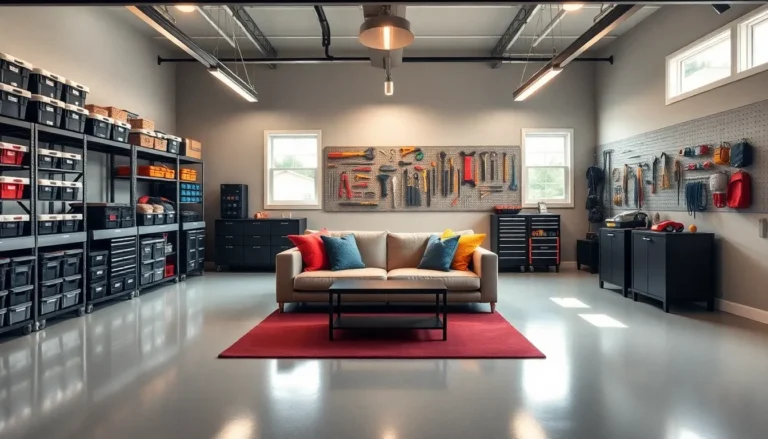Table of Contents
ToggleEver wondered what people thought the world would look like in 100 years? Grab a snack and a comfy seat because we’re diving into some wildly imaginative, often hilarious predictions of the future. Just imagine: flying cars, concrete jungles, or maybe even robot overlords. Many of these predictions sounds like they came straight from a sci-fi novel. Yet here we are, in a world shaped by technology, social changes, and, dare I say, a touch of humor. Buckle up as we explore the historical context, cultural quirks, and technological marvels behind these captivating forecasts.
Historical Context of Futuristic Predictions

For centuries, humanity has gazed into the future like a kid peering into a candy store, wondering what delights await. Ancient civilizations often looked to the stars, believing that celestial movements held the keys to future events. Whether seeking omens in the heavens or consulting oracles, cultures have long used predictions as a way to navigate uncertainty.
As literacy rates improved and the Printing Revolution kicked in, futuristic speculation exploded. From Jules Verne’s astonishing tales of submarines and space travel to H.G. Wells’ thought-provoking narratives, writers began to shape public perception of the future. Society’s awe of science allowed these predictions to flourish. Add in a sprinkle of human imagination, and suddenly, the sky was the limit, or at least, that’s what they thought.
The Role of Technology in Predictions
Technology has been the chameleon of predictions, always changing, evolving, and sometimes flipping the script altogether. Remember when people thought the internet would be a fleeting fad? Fast forward to today, and it’s almost hard to imagine life without it. Technology not only enables predictions but also shapes them.
The development of computing power has notably influenced forecasting methods. With complex algorithms and big data, predicting trends today is like having a crystal ball that actually works. But, this doesn’t mean past predictions didn’t get it wrong. Take the early 20th-century visions of houses with mechanical maidservants. We may not have that exactly, but we’ve certainly made strides in robotics.
The paradox here? While technology enhances our predictive capabilities, it can also mislead us, leading to a gap between expectation and reality.
Cultural Influences on Future Forecasting
Cultural contexts play a monumental role in shaping future predictions. Star Wars and Star Trek have informed generations about what the future could hold, each influencing technological aspirations and public imagination. In Japan, a culture steeped in technology, there exists a fascination with robots for companionship. Meanwhile, Western cultures often focus on advancements such as artificial intelligence or space exploration.
Different societies have unique priorities that influence their perspectives on the future. This cultural lens can turn something as simple as a household appliance into a futuristic project or a societal dilemma. Consider predictions about AI: some view it as a benefactor, while others see it as a potential threat. Depending on cultural narratives, the future can either be a utopia or dystopia. This fascinating interplay makes each context rich with storytelling and imagination.
Notable Predictions and Their Outcomes
Amid various predictions, several stand out for their ambition, scope, and, sometimes, utter hilarity. Take the infamous 1956 prediction by popular science magazine, which proclaimed that people would have short workweeks due to automation. Fast forward to today, and many still yearn for that elusive balance.
Then there was the prediction that by the year 2000, cars would fly and commute times would be dramatically reduced. While we can see glimmers of this with drones and advancements in air traffic technology, everyday flying cars remain elusive.
On the flip side, some predictions were spot-on. The advancement in communication technology has reshaped how we connect globally. Video calls, social media, and instant messaging were all envisaged long before they became commonplace. Who would have thought virtual hangouts would become the norm during a pandemic? It’s both enlightening and amusing to see which predictions held water and which floated away.
The Evolution of Predictive Methods
Just as fashion evolves from bell-bottoms to skinny jeans, predictive methods have come a long way from the mystical pods of oracles. Today, statisticians use sophisticated models, machine learning, and technological advancements to forecast trends across industries. From market analysis to weather forecasting, accuracy has arguably improved.
Yet, one can’t help but appreciate the charm of past methods. A weather forecast from 1960 involved looking out the window or simply guessing. While today’s precision is generally superior, the excitement of waiting for confirmation, even if it’s wildly inaccurate, undoubtedly had its appeal.
In an age driven by data, the journey of prediction feels like a rollercoaster ride, thrilling yet uncertain. Now, even experts can miss the mark, and sometimes, intuition trumps all the algorithms in the world.
Lessons Learned from Past Predictions
Looking back over the landscape of predictions teaches valuable lessons. First, predictions are inherently subjective, influenced by culture, societal norms, and technology. Second, as much as we’ve progressed, we remain fallible, prone to biases and errors. Something that seems likely today may look absurd a decade from now.
Also, predictions need a sprinkle of humility. The future is a complicated tapestry woven from diverse threads, innovation, creativity, desire, and sometimes, sheer luck. Instead of trying to label tomorrow’s landscape definitively, it’s essential to embrace flexibility. After all, a world that can surprise us in delightful ways is often more exciting than one that follows a rigid script.








